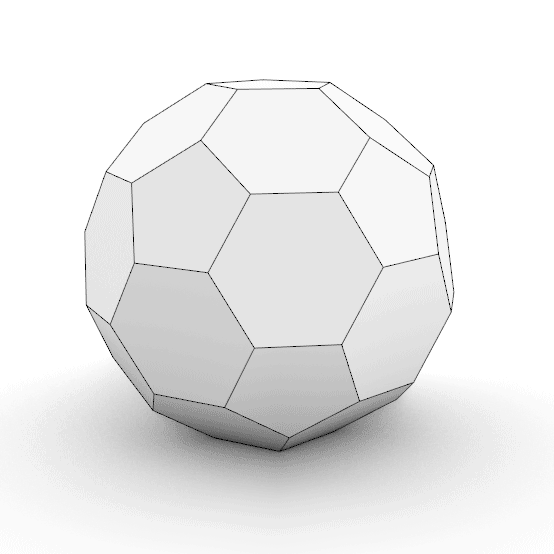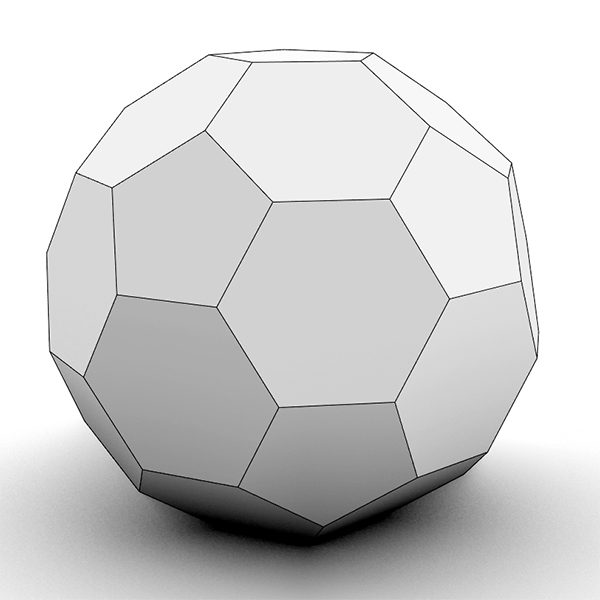Modeling the Buckyball
The Truncated Icosahedron (5,6,6) is an Archimedean Solid we often recognize as the iconic soccer ball. This geometric structure, also affectionately known as the “Buckyball” in honor of the visionary architect Buckminster Fuller, has gained significant popularity and recognition both within the realms of mathematics and everyday life. It is composed of twelve regular pentagons and twenty regular hexagons, meticulously arranged to achieve a harmonious balance. This symmetrical nature makes it a fascinating object of study in geometry and various fields. This is a short tutorial on modeling the Buckyball.
The Truncated Icosahedron has found practical applications in architectural design, particularly in the geodesic domes pioneered by Buckminster Fuller. Geodesic domes utilize the inherent strength and efficiency of this polyhedral structure to create spacious, self-supporting enclosures. Its intricate symmetry and mathematical properties have made it a subject of exploration in various scientific disciplines, including crystallography and materials science. We can construct a Truncated Icosahedron by just “truncating” an Icosahedron. This means we should be trimming one-third of each edge of an Icosahedron, (described here). To find 1/3’s of each edge, I used duplicate border, explode, and divide commands. I got the points that construct the pentagons and hexagons. Then, I finished paneling by using planar surface commands on closed polyline edges.

You can rebuild the model by following the tutorial above. However, if you want to support this website by downloading my Rhino file; would you consider being my Patreon? Here is the link to my Patreon page including the Rhino models used in Modeling the Buckyball and more.









